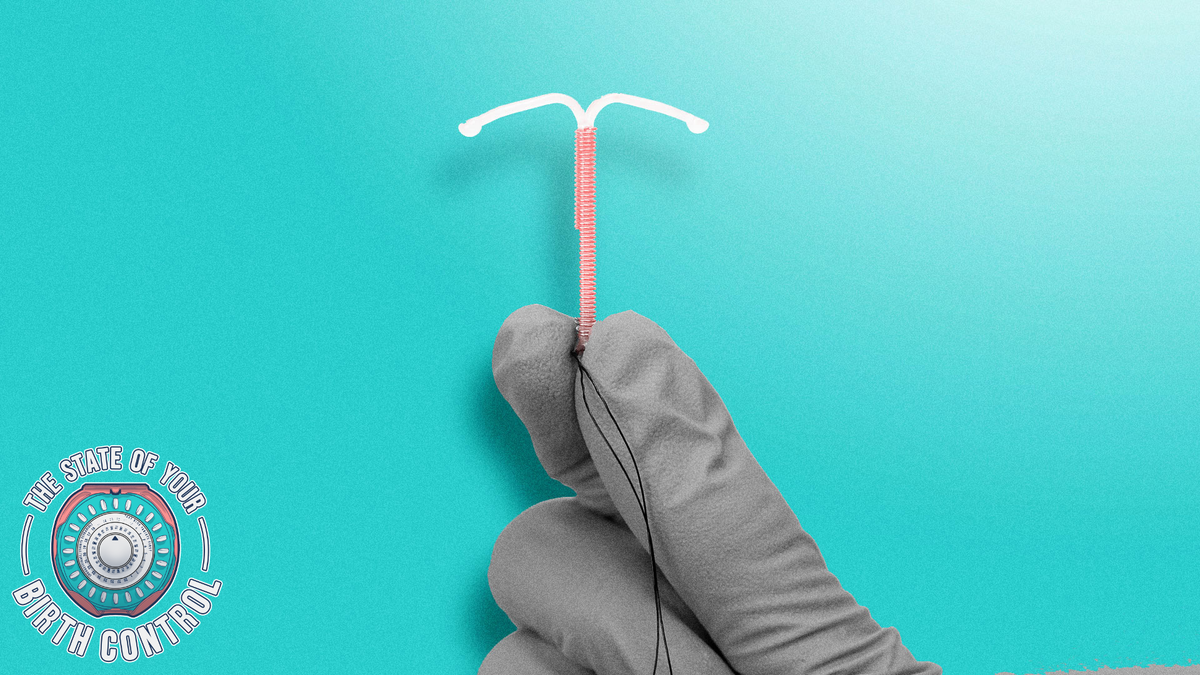What to Expect When You're Getting an IUD
Without ongoing education, our knowledge about birth control is frozen in time. In The State of Your Birth Control, Lifehacker follows the history of contraception in the U.S. and explains what everyone needs to know about their options, recent...

Without ongoing education, our knowledge about birth control is frozen in time. In The State of Your Birth Control, Lifehacker follows the history of contraception in the U.S. and explains what everyone needs to know about their options, recent medical advancements, and legal access. Follow the complete series here.
The intrauterine device (IUD) is one of the best options for birth control for many people. It doesn’t require daily or weekly maintenance, it’s 99% effective at preventing pregnancy, and some types can result in you having lighter periods or no periods at all. But even given all that, you may be wondering about
the potential drawbacks, whether it’s really worth it—and how much it may hurt to get one inserted.
Here’s everything you need to know about getting an IUD.
Why are IUDs so popular?
IUDs are around 99% effective at preventing pregnancy, which makes them more effective than condoms or birth control pills and puts them on par with surgical sterilization. Their typical-use failure rates are nearly identical to their perfect-use rates, since there is nothing to do—just get it inserted, and remember to get it replaced when the effectiveness wanes.
Hormonal IUDs can result in lighter periods, or even stop your period, which is a plus for many people. Copper IUDs don’t have that effect, but they can be a great option if you need or prefer a method of birth control that doesn’t use hormones.
IUDs can also act as emergency contraception if you get one inserted within 5 days after unprotected sex. It’s actually the most effective type of emergency contraception, according to Planned Parenthood: 99.9%.
On the other hand, IUDs aren’t for everybody. Some people can’t get one because of the shape or size of their uterus, and there are other reasons, personal and medical, why a different birth control option might be right for you. IUDs also carry a very small-but-not-zero risk of complications like perforating your uterus. If you’d like to read more about your options, we have a guide here.
Where is an IUD implanted?
An IUD is inserted into your uterus. Even though a uterus can expand to fit a baby, its normal, non-pregnant size is smaller than you probably realize—about three inches long, which is smaller than your bladder. A typical IUD looks like a capital letter T, and is a little more than an inch long and an inch wide. It fits right in there.
When the IUD is inserted, the clinician nestles it inside your otherwise empty uterus, where it stays until you get it removed (usually years later). The IUD has strings that hang down through your cervix, and you or your partner may be able to feel them in your vagina if you reach inside. (These strings are used for removal, so don’t pull on them!)
How long do IUDs last?
How long an IUD will last depends on the brand, but all will prevent pregnancy for years. Here are the official timelines from the manufacturers:
Skyla: 3 yearsKyleena: 5 yearsMirena and Liletta: 8 yearsParagard: 10 yearsAn IUD can always be removed early if you decide you’d like to get pregnant or if you change your mind about wanting an IUD for any other reason.
What kind of IUD is best?
There are two main kinds of IUDs, and they work a bit differently. Which one is “best” for you will depend on what exactly you’re looking for from your IUD.
Copper IUDs
Paragard is made with copper coils surrounding its plastic body, and it’s thought to work mainly by preventing sperm from being able to swim and from being able to break through the surface of an egg to fertilize it. It “may” also prevent implantation of a fertilized egg, according to the Paragard website, but it’s unclear whether than actually happens in reality. (Yep, like many other drugs and procedures, we know more about the fact that IUDs work than we do about exactly how they work.)
Paragard is the only brand of copper IUD currently on the market in the U.S. Copper IUDs can result in heavier periods and more cramping for the first three to six months after insertion, although after that, your period may return to normal.
Hormonal IUDs
The other IUDs on the market are made of plastic and slowly release hormones into your uterus—specifically levonorgestrel, a progestin. Levonorgestrel is the same hormone used in some birth control pills, and in Plan B emergency contraception. It’s chemically similar to progesterone, a hormone that your body makes when it is pregnant.
Hormonal IUDs seem to work by triggering your body to make a thicker cervical mucus, which sperm can’t easily swim through. They also thin the lining of your uterus, which has the side effect for many people of making periods lighter. Some hormonal IUD users even find that, after a while, they don’t get periods at all. (That said, your periods may be irregular or even heavier for the first three to six months.)
Of the four options, Mirena and Liletta carry the highest dose of levonorgestrel, 52 milligrams in total. (These two are also approved for the treatment of heavy menstrual bleeding; they are considered to work for that purpose for five years.) About 40% of Mirena users have no menstrual bleeding at five years post insertion. The number is 38% at three years for Liletta. For both, around 20% of patients have no bleeding at 1 year post insertion.
Skyla and Kyleena are slightly smaller than the other IUDs, at 30 x 28 mm. (Mirena and Liletta are 32 x 32 mm.) In theory, this should make them easier and less painful to insert, but in practice, size doesn’t seem to make a difference. They do have lower levels of hormones, which may be a plus if you want to keep having a period (losing your period is less likely with these options), or if you want a lower dose of hormones, whether for a medical reason or just personal preference.
How much does it hurt to get an IUD?
Getting an IUD can hurt, or be uncomfortable—but not always. People’s experiences run the spectrum from excruciating pain to complete nothingburgers. (Personally, I’m in the second camp: I was expecting my insertion to hurt at least a little, and it didn’t. At all.)
I spoke to Dr. Rachel Flink, an ob/gyn in upstate New York, to ask what people should really expect. She confirmed she has “seen the full range” of experiences in her patients, and shared some information about who tends to have more pain, and how to alleviate it.
One big factor is whether you’ve given birth vaginally or not. If you have, you’re much less likely to have severe pain—about 10%, versus 50% for people who have never given birth. On the other hand, you may be more likely to have pain if you’ve had a c-section in the past, or if you normally have painful periods.
Can I get an anesthetic for an IUD, and how can I find a provider who will give me one?
Your options for pain management will vary based on your provider, so this is something you can ask about when you’re making your appointment. Flink points out that, as an obstetrician-gynecologist with access to a full operating room, she can offer a lot more than, say, a nurse practitioner or physician assistant whose practice is in an out-of-hospital office.
Some of the options to ask about include:
Taking an over-the-counter medication before your appointment. This is a pretty common recommendation, and research shows it does help. You’ll likely be advised to take 800 mg of ibuprofen (for example, four Advil tablets) or 550 milligrams of naproxen (two Aleve).Anti-anxiety medications. This would be a single dose that you bring to the appointment, even if you aren’t normally on anti-anxiety medications. You’d need to discuss this with your doctor ahead of time, so don’t expect to ask for it the day of the insertion. These medications don’t necessarily decrease pain, but if you’re extremely nervous or fearful about the procedure, they can help you to get through it.Narcotic pain medications. These obviously aren’t appropriate for everyone, but a single dose at the appointment may be an option that your doctor can prescribe. This is another one to discuss ahead of time. Intravenous sedation. This is “not needed by most patients,” Flink says, but it is an option that exists. It would make the insertion into a more involved and expensive procedure; your healthcare team would need to include an anesthesiologist or nurse anesthetist, for example, and you would need to avoid eating beforehand and have somebody around to drive you home. Insurance may not cover the extra expenses.A cervical block. Similar to the local anesthetic you get at the dentist, it’s possible to inject a medication like lidocaine into the nerves around the cervix. Unlike the dental version, Flink says, it’s often impossible to numb all of the nerves. And since the injection itself can also be painful, it’s often a toss-up as to whether it’s worth it.Numbing gels for the cervix are also sometimes available, although the evidence is mixed on whether they reliably reduce pain.If pain management is important to you, make sure you ask about it before you make your appointment for the IUD—and maybe even before you select a provider to do the job. Also check with your insurance company about whether they will cover the method of pain management you expect to use.
How long does it take to get an IUD, and what does it involve?
An IUD can be inserted during an office visit, and only takes about 10 minutes once you’re in the stirrups. That said, if you have a checkup or other appointment coming up, call ahead and make sure to mention that you want an IUD. If you wait until the middle of your checkup to ask, there may not be enough time to insert it, or they may not have an IUD kit ready to go.
The procedure has a few main steps. The provider will use a speculum to hold the vagina open and use a measuring device called a sound to determine the size of your uterus. Then they’ll insert a thin, straight tube into your uterus and push the IUD through it; it pops into its T shape once it’s inside. Finally, they will trim the strings, and you’re done.
What happens after an IUD is inserted?
For the next day or so, it’s common to have some cramping. This side effect is mild to nonexistent for some people, and more severe for others. Some providers may recommend refraining from sex or exercise for 24 hours, but others may not give you any restrictions at all. If you have specific questions about what happens during or after the insertion, your provider will be the best person to ask.
For hormonal IUDs, you may be advised to use a backup method of birth control, like condoms, for the first 7 days after insertion. (If it was inserted in the first 7 days of your menstrual cycle, you may be protected right away.)
Finally, you may experience irregular spotting and bleeding after the insertion and/or for the next few months. After that, your cycle should get more regular—possibly getting lighter or disappearing altogether, if you got a hormonal IUD.
What are the potential complications of an IUD?
One risk is that the IUD could come out. If this happens, it’s more likely to happen in the first 3 months after insertion, rather than later. To make sure it’s in the right place, you can feel inside your vagina for the strings. (If the strings feel much longer than usual, or if you feel the hard plastic part of the IUD, call your provider.)
There is also a very rare but serious risk that the IUD could perforate (poke through) your uterus, including during the insertion procedure. If you have severe pain, bleeding, dizziness, fever, or chills after the IUD insertion, something could be seriously wrong; call the clinic and let them know.
What is life with an IUD like?
Mostly, you forget that you even have it. For the first few months, you may be advised to check every month (for example, around the time of your period) just to be sure you can still feel the strings.
Just make sure to remember when you got the IUD, so that you can get it replaced in three years, or 10 years, or whatever is advised. Sometimes the manufacturer will find out that an IUD is effective for longer than they originally thought; Mirena, for example, was originally a five-year device. That was later adjusted to six years, and then seven, and now eight. So make sure to call before you get it replaced; you may find that you can go even longer before your next insertion.

 Fransebas
Fransebas 






























.jpeg?trim=0,89,0,88&width=1200&height=800&crop=1200:800)

